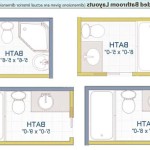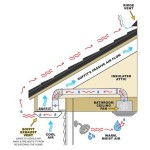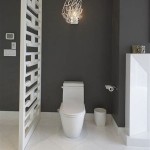Is Laminate Flooring Recommended for Bathrooms?
Bathrooms are high-traffic areas that experience a unique combination of moisture, temperature fluctuations, and potential for spills. This presents a challenge when selecting flooring materials, as many options are susceptible to damage or deterioration under these conditions. While laminate flooring offers numerous advantages for its durability and affordability, its suitability for bathrooms is a topic of debate.
The decision ultimately hinges on a careful consideration of the pros and cons, with specific attention to the type of laminate, installation, and ongoing maintenance. This article aims to provide a comprehensive overview of laminate flooring in bathrooms, exploring its potential benefits, drawbacks, and important factors to consider before making a final choice.
Advantages of Laminate Flooring in Bathrooms
Laminate flooring has gained popularity thanks to its durability, affordability, and wide range of styles. Several of these advantages can be particularly beneficial in bathrooms.
Durability and Water Resistance
Laminate flooring is known for its resistance to scratches, dents, and fading, making it a durable option for high-traffic areas. Modern laminate flooring is also engineered with a moisture-resistant core, capable of handling occasional spills and humidity. However, it is crucial to choose laminate with a high water resistance rating and to avoid prolonged exposure to standing water.
Affordability
Laminate flooring is generally more affordable than many other flooring materials, such as hardwood or tile. This makes it an attractive option for budget-conscious homeowners looking to upgrade their bathroom. The lower cost allows for greater flexibility in design and allows for a wider array of styles and finishes to match personal preferences.
Easy Maintenance
Laminate flooring is relatively easy to clean and maintain. A simple sweep or vacuuming, along with occasional damp mopping, is usually sufficient to keep it looking its best. It is essential to use a cleaner specifically designed for laminate flooring to avoid damaging the surface. Unlike other flooring materials, laminate requires minimal special care, saving time and effort in the long run.
Disadvantages of Laminate Flooring in Bathrooms
While laminate flooring offers several advantages, it also comes with some drawbacks that are particularly relevant in bathrooms.
Limited Water Resistance
Despite advancements in water resistance technology, laminate flooring is not entirely waterproof. While it can withstand accidental spills or humidity, prolonged exposure to standing water can cause warping, swelling, and damage to the core. This vulnerability emphasizes the importance of proper installation and maintenance.
Susceptibility to Mold and Mildew
The presence of moisture, especially in poorly ventilated bathrooms, can create a breeding ground for mold and mildew. This can lead to unpleasant odors, health issues, and potentially damage the flooring itself. To prevent this, it is essential to ensure adequate ventilation, quick drying of spills, and regular cleaning.
Limited Durability in High-Moisture Environments
While laminate flooring is generally durable, its resistance to moisture can be compromised in high-moisture environments. Prolonged exposure to steam or frequent splashing can lead to delamination, where the layers of the laminate separate, leading to warping and damage. This can shorten the lifespan of the flooring in bathrooms with frequent showers or baths.
Factors to Consider When Choosing Laminate Flooring For Bathrooms
When considering laminate flooring for your bathroom, several factors should be carefully evaluated to ensure it meets your specific needs and minimizes potential risks.
Water Resistance Rating
The most important factor is the water resistance rating of the laminate flooring. Look for products with a higher rating, specifically designed for wet areas. This rating indicates the flooring's ability to withstand moisture exposure and potential spills.
Installation and Maintenance
Proper installation is crucial to maximize the water resistance and longevity of laminate flooring. It involves ensuring a well-ventilated bathroom, using a moisture barrier underneath the flooring, and sealing the seams. Regular cleaning and maintenance are also essential to prevent mold and mildew growth and to maintain the flooring's appearance.
Alternative Options
While laminate flooring can be a budget-friendly option, other flooring materials, such as porcelain tile or luxury vinyl plank (LVP), offer greater water resistance and durability in bathroom environments. Consider the long-term costs and benefits of each option before making a decision.
Ultimately, the decision of whether or not laminate flooring is recommended for bathrooms depends on individual circumstances, design preferences, and specific requirements. By carefully considering the advantages, disadvantages, and factors discussed above, homeowners can make an informed decision that best suits their unique needs and budget.

The Pros Cons Of Bathroom Flooring Options Carpet Court

How To Install Waterproof Laminate Flooring Twenty Oak

What Is The Best Flooring For Bathrooms Tarkett

Bathroom Flooring Ideas The Home Depot

Best Bathroom Flooring Options

Waterproof Bathroom Flooring Options Twenty Oak

How To Install Vinyl Plank Flooring In A Bathroom Fixthisbuildthat

Vinyl Vs Laminate Flooring Which Is Best For Your Home

Bathroom Flooring Vinyl Multipanel

Best Bathroom Flooring Options
Related Posts







